Benzene sulphonyl chloride (C6H5SO2Cl) is called Hinsberg's reagent. It is used for the distinction between primary, secondary and teriary amines. It is also used for separation of primary, secondary and teritiary amines from their mixture. (1∘,2∘,3∘ amines in mixture)
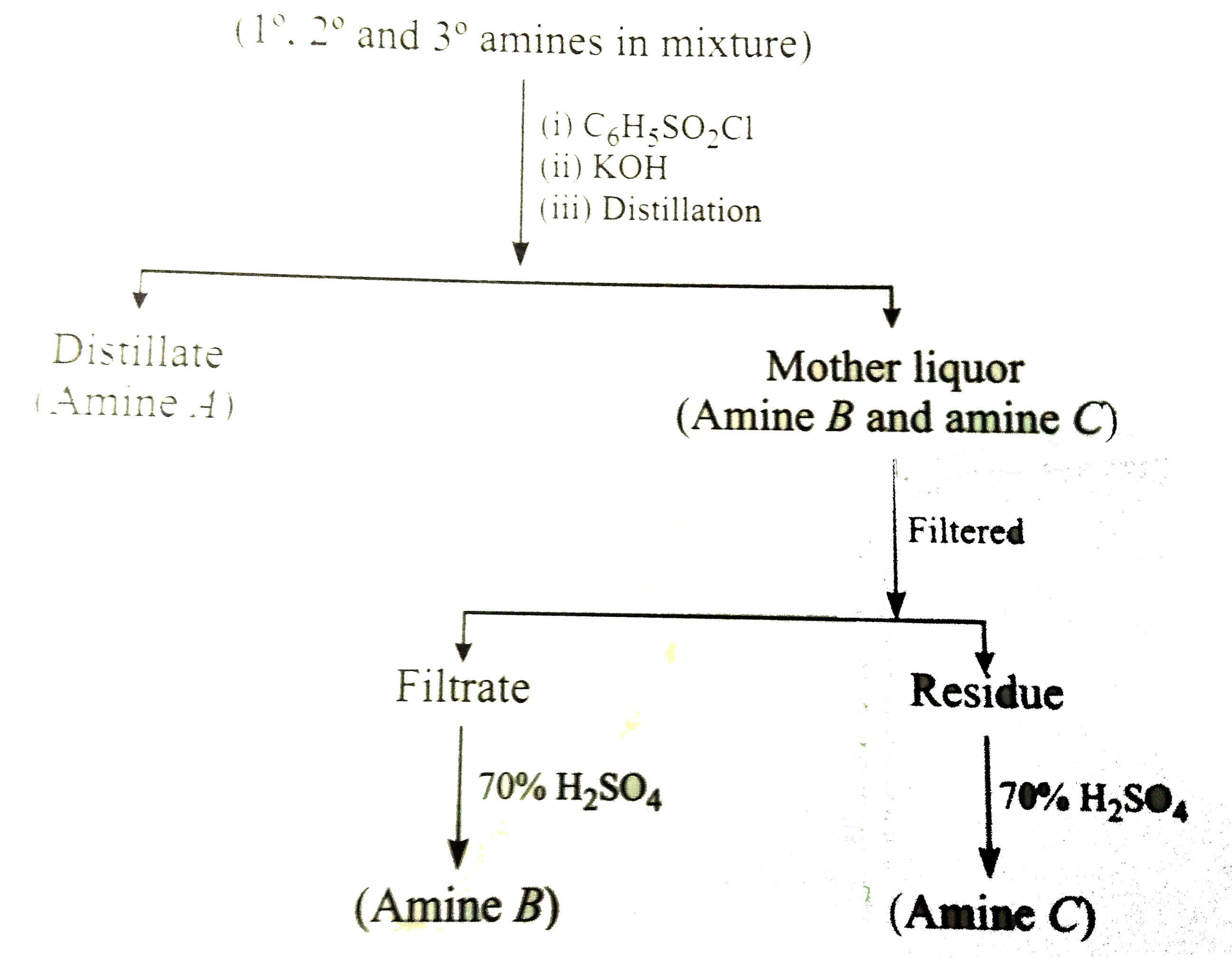
The resisdue insoluble in KOH obtained in the Hinsberg's test, corresponds to:
primary amine
secondary amine
tertiary amine
aromatic primary amine
The correct Answer is:B
Step by step video, text & image solution for Benzene sulphonyl chloride (C_(6)H_(5)SO_(2)Cl) is called Hinsberg's reagent. It is used for the distinction between primary, secondary and teriary amines. It is also used for separation of primary, secondary and teritiary amines from their mixture. (1^(@), 2^(@), 3^(@) amines in mixture) The resisdue insoluble in KOH obtained in the Hinsberg's test, corresponds to: by Chemistry experts to help you in doubts & scoring excellent marks in Class 12 exams.
Topper's Solved these Questions
- BOOK - OP TANDONCHAPTER - ORGANIC COMPOUNDS CONTAINING NITROGENEXERCISE - PASSAGE 25videos
ORGANIC COMPOUNDS CONTAINING NITROGEN
- BOOK - OP TANDONCHAPTER - ORGANIC COMPOUNDS CONTAINING NITROGENEXERCISE - PASSAGE 34videos
ORGANIC COMPOUNDS CONTAINING NITROGEN
- BOOK - OP TANDONCHAPTER - ORGANIC COMPOUNDS CONTAINING NITROGENEXERCISE - MATRIX6videos
ORGANIC COMPOUNDS CONTAINING NITROGEN
- BOOK - OP TANDONCHAPTER - ISOMERISM (STRUCTURAL AND STEROISOMERISM)EXERCISE - INTEGER7videos
ISOMERISM (STRUCTURAL AND STEROISOMERISM)
- BOOK - OP TANDONCHAPTER - RADIOACTIVITY AND NUCLEAR TRANSFORMATION EXERCISE - SECTION - VI3videos
RADIOACTIVITY AND NUCLEAR TRANSFORMATION
Similar Questions
Nitrous acid reacts with all classes of amines. The product obtained from these reactions depend on whether primary, secondary or tetriary and ,wheather the amine or aliphatic or aromatic.
Aliphalic primary amines react with acid (NaNO2+HCl) to form alcohol as major product. In , addition to alcohol, alkene and alkyl halides are also formed as minor product.
Certain cyclic primary amines can undergo either ring expansion or ring contraction reactions on treatment with acid. This reaction is called Demajanov ring expansion or contraction.

What will be the major product when 2-aminopropane is treated with nitrous acid?02:10View SolutionAmines are basic compounds They act as Lewis base due to the presence of lone pair electrons at nitrogen
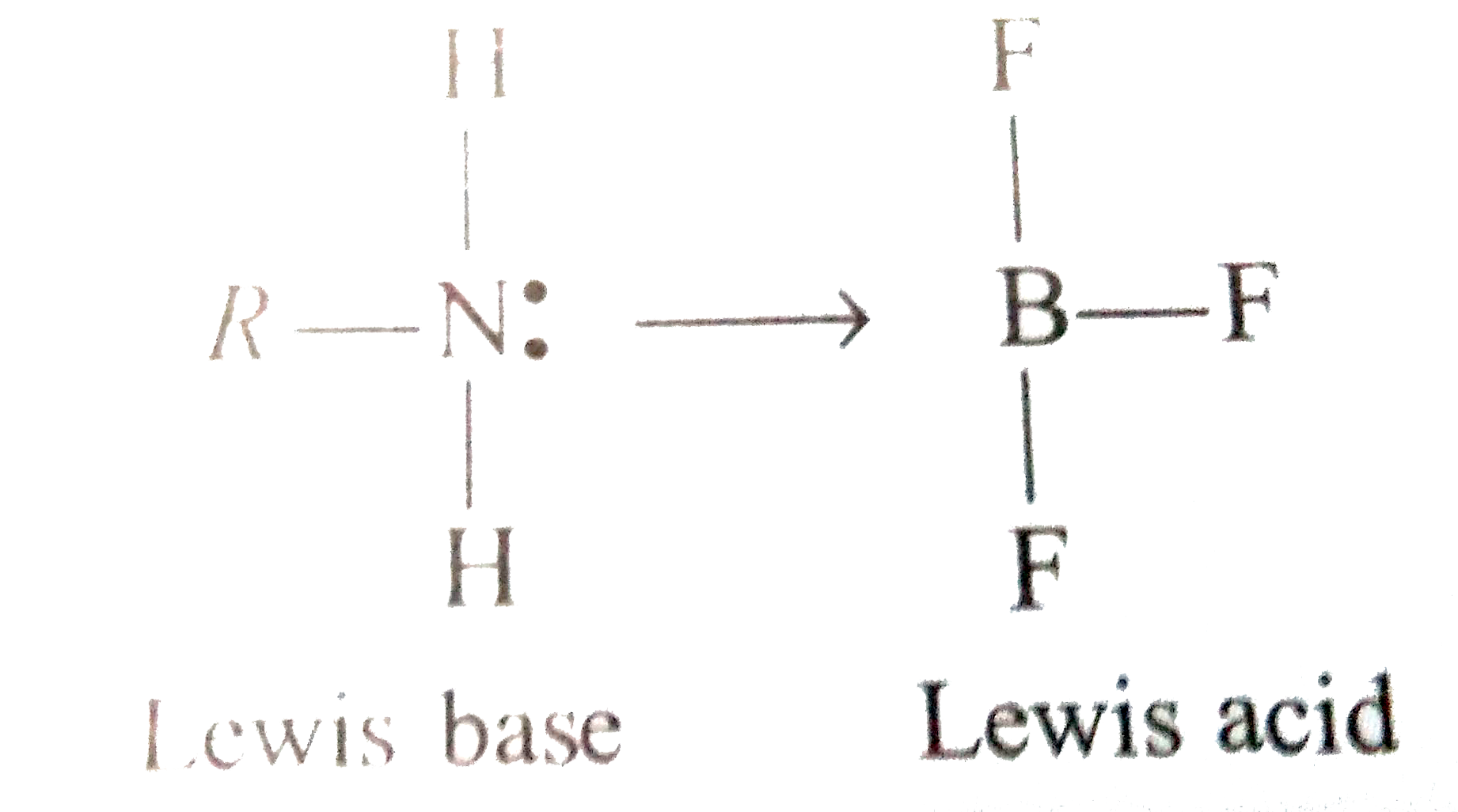
Amines also behave as base as well as Bronsted inductive effect, steric hindrance and resosnance.
CH3−NH2+HOH⇔CH3−NH+3+OH−
CH3−NH2+H+Cl−⇔CH3−NH+3+Cl−
Alkyl groups and electron groups hence these groups increases the electron density at nitrogen as well as the basic amines character of amines. Basic character of teritary amines is reduced due to the steric hindrance of three alkyl groups. Experimentally it is observed that stronger bases have smaller values of pKb greater value of Kb.
Which among the following is the most basic in aqueous medium?02:21View SolutionMatch the following:
 View Solution
View SolutionWrite the total number of cyclic structural as well as stereosiomers possible for a compound with the molecular formula C5H10.
View SolutionNucleus of an atom resembles with a drop of liquid. Density of nucleus is very high, i.e., 108 tonne/cc or 130 trillion tonnes m−3. This density is about a trillion times greater than that of water. Density of nuclei of all elements are same, it is independent of atomic number or atomic mass. However, the radius of nucleus depends on the mass number . Surface However, the radius of nucleus depends on the mass number. Surface tension of nucleus is also very high. i.e., about 1.24×1018 times, the suface tension of water.
The radius of .126C nucleus is:View SolutionWhat reagent is used In the Hinsberg's test of amines?
View SolutionPrimary amine can be distinguished from a secondary amine using the reagents
03:21View SolutionBenzene sulphonyl chloride (C6H5SO2Cl) is called Hinsberg's reagent. It is used for the distinction between primary, secondary and teriary amines. It is also used for separation of primary, secondary and teritiary amines from their mixture. (1∘,2∘,3∘ amines in mixture)
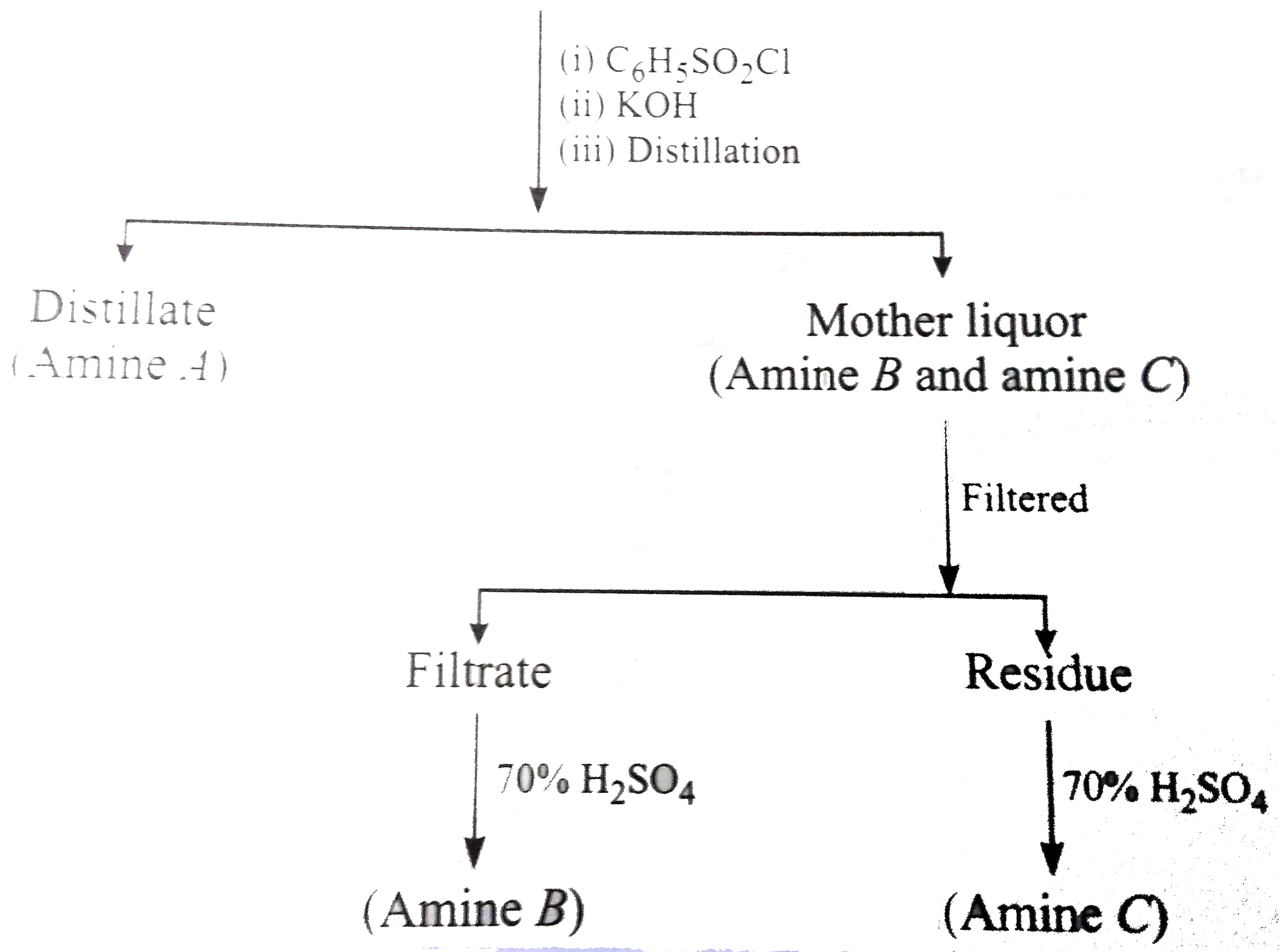
Which of the following is correctly matchd?01:48View SolutionBenzene sulphonyl chloride (C_(6)H_(5)SO_(2)Cl) is called Hinsberg's reagent. It is used for the distinction between primary, secondary and teriary amines. It is also used for separation of primary, secondary and teritiary amines from their mixture. (1^(@), 2^(@), 3^(@) amines in mixture) Which of the following amines does not react with benzene sulphonyl chloride?
02:46View SolutionBenzene sulphonyl chloride (C6H5SO2Cl) is called Hinsberg's reagent. It is used for the distinction between primary, secondary and teriary amines. It is also used for separation of primary, secondary and teritiary amines from their mixture. (1∘,2∘,3∘ amines in mixture)
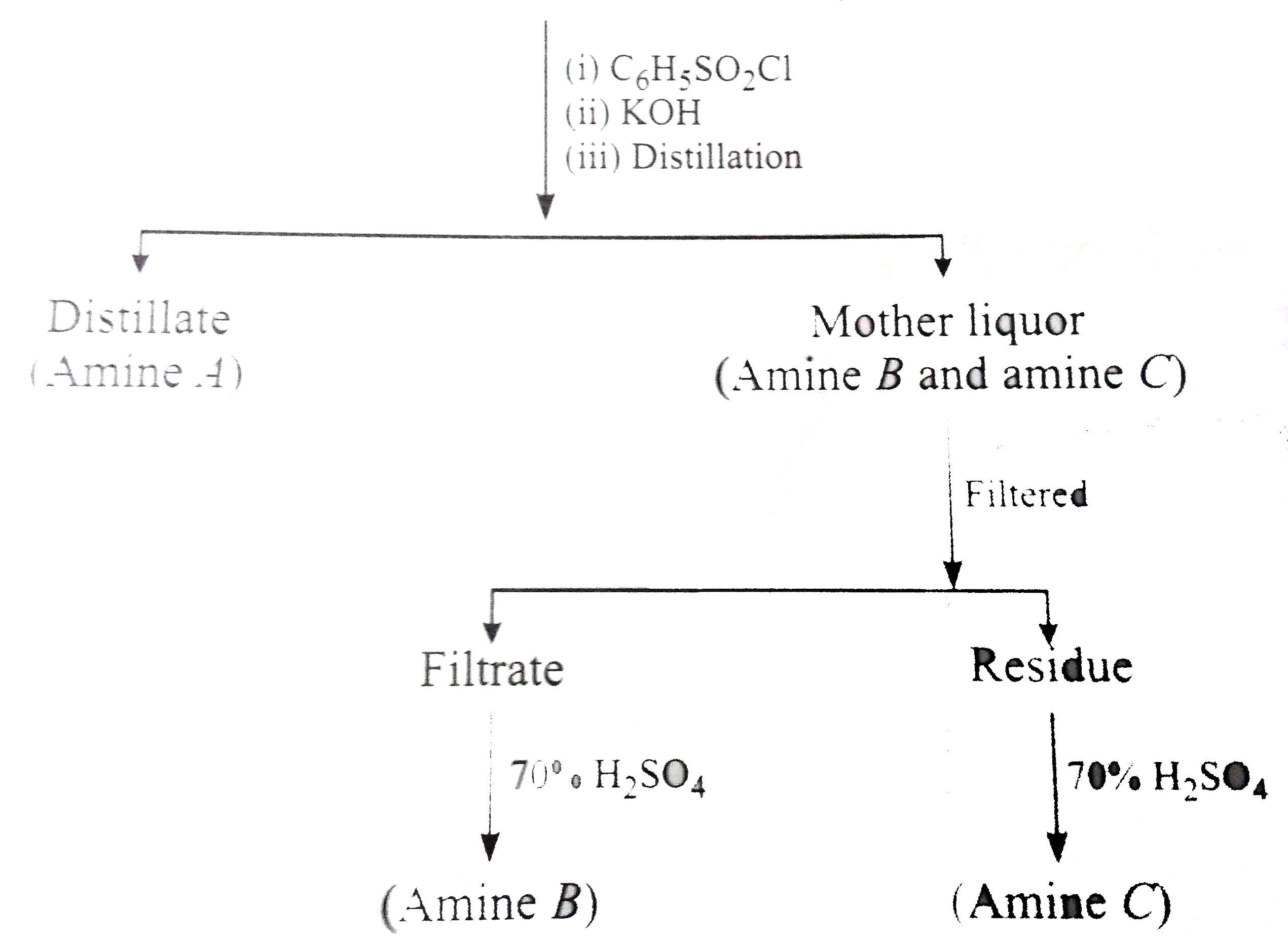
Which of the folloiwng is primary amine R−NH2?04:09View SolutionBenzene sulphonyl chloride (C6H5SO2Cl) is called Hinsberg's reagent. It is used for the distinction between primary, secondary and teriary amines. It is also used for separation of primary, secondary and teritiary amines from their mixture. (1∘,2∘,3∘ amines in mixture)
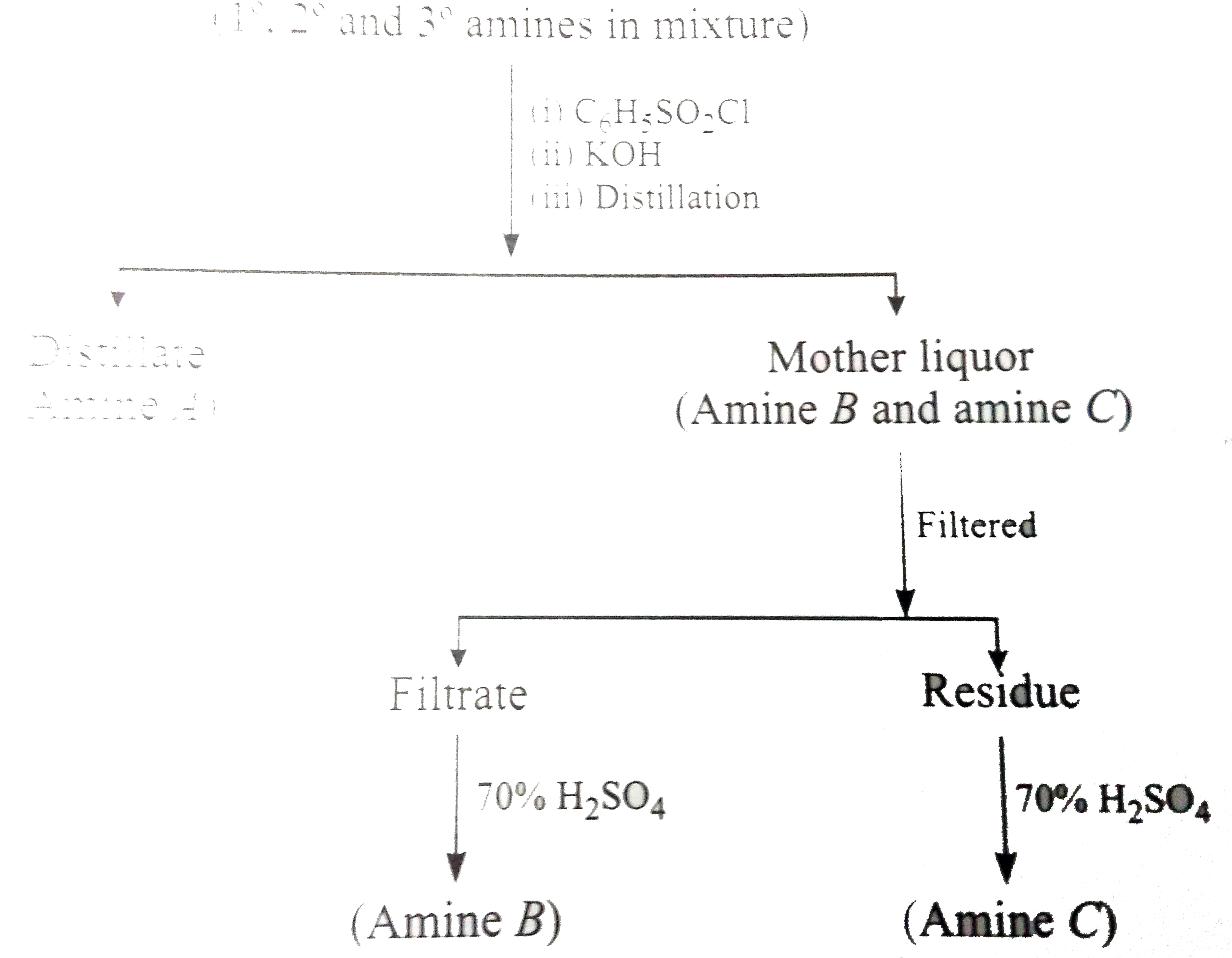
Which of the following amines represent C?04:27View SolutionA mixture of 1^(@), 2^(@) and 3^(@) amines can be separated by Hinsberg's reagent which is
03:36View SolutionStatement 1: Primary, secondary and tertiary amines can be separated by Hinsburg reagent and
Statement 2: These amines have different rate of reaction with benzens sulfonyl chloride.View SolutionWhat is Hinsberg's reagent? How it is used to distinguish primary amine from a secondary amine?
09:39View Solution(a) What is Hinsberg's reagent? How is it used to distinguish a primary amine from a secondary amine?
02:14View Solution

